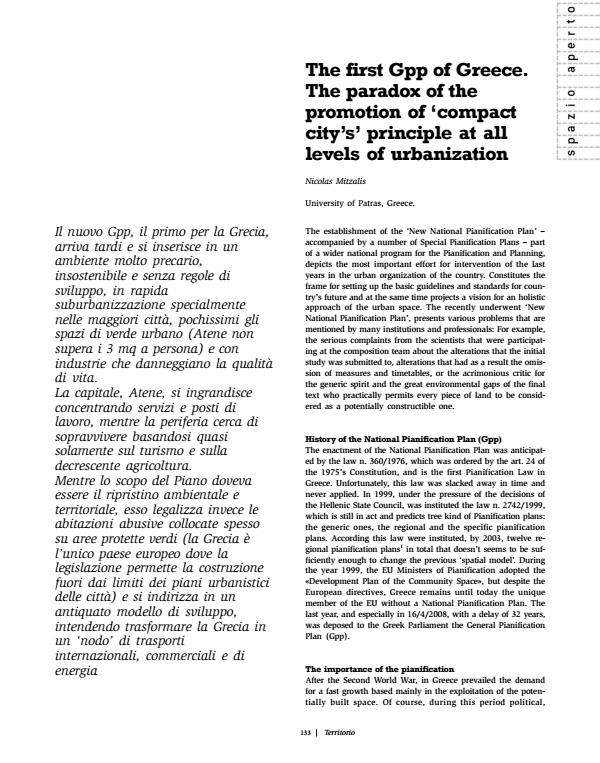The first Gpp of Greece. The paradox of the promotion of ‘compactcity’s’ principle at all levels of urbanization
Journal title TERRITORIO
Author/s Nicolas Mitzalis
Publishing Year 2009 Issue 2009/48 Language English
Pages 5 P. 133-137 File size 248 KB
DOI 10.3280/TR2009-048023
DOI is like a bar code for intellectual property: to have more infomation
click here
Below, you can see the article first page
If you want to buy this article in PDF format, you can do it, following the instructions to buy download credits

FrancoAngeli is member of Publishers International Linking Association, Inc (PILA), a not-for-profit association which run the CrossRef service enabling links to and from online scholarly content.
<em>The first Gpp of Greece. The paradox of the promotion of ‘compact’ city’s principle at all levels of urbanization</em> - The new Gpp action plan, the first of its kind in Greece, is late in coming and takes place in a somewhat unstable, unsustainable and unregulated development context undergoing rapid suburbanisation. This is especially true of the big cities where green areas are few and far between (Athens has only 3 sqm/person) and where industry is negatively impinging on the quality of life. Athens is expanding as the focal point of services and jobs, while the suburbs try to get by almost exclusively on tourism and waning agriculture. The scope of the plan should have been regional and environmental restoration, but instead it legalises unauthorised dwellings that in many cases have been built on protected green areas. Greece, indeed, is the only European country where the erection of buildings that do not comply with the benchmark criteria of town plans is actually permitted by law. The plan thus falls back on an outdated model of development which envisages the transformation of Greece into a ‘node’ of international, commercial and energy transport.
Nicolas Mitzalis, The first Gpp of Greece. The paradox of the promotion of ‘compactcity’s’ principle at all levels of urbanization in "TERRITORIO" 48/2009, pp 133-137, DOI: 10.3280/TR2009-048023